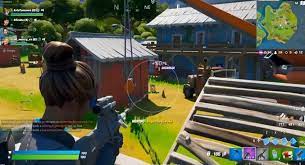In the fast-paced world of CFD (Contracts for Difference) trading, achieving consistent results can be a complex endeavor. One effective way to enhance your trading strategies is through backtesting, a method that allows traders to test their strategies using historical data before applying them in real-world scenarios. This blog post will guide you on how to backtest CFD trading strategies for better results, providing practical tips and valuable insights to help you optimize your approach.
Understanding CFD Trading and Its Importance
CFD trading is a form of derivative trading that allows you to speculate on the price movements of various financial instruments without owning the underlying asset. This type of trading offers unique opportunities for leveraging trades, but it also comes with significant risks. Therefore, having a solid strategy is crucial to success in this market.
Backtesting is a vital tool for CFD traders because it enables them to evaluate the effectiveness of their strategies under different market conditions. By testing strategies against historical data, traders can identify potential strengths and weaknesses, ultimately leading to more informed and profitable trading decisions.
What Is Backtesting?
Backtesting involves simulating a trading strategy using historical market data to assess its potential performance. This process allows traders to understand how their strategies would have performed in the past, offering valuable insights into their likely future performance.
When backtesting, traders use historical price data to execute trades based on their predefined strategy rules. This helps them identify patterns and trends that may not be apparent when looking at real-time data alone. By analyzing the results of backtesting, traders can refine their strategies, making them more robust and adaptable to changing market conditions.
Why Backtesting Is Essential for CFD Traders
Backtesting is crucial for CFD traders for several reasons. Firstly, it allows traders to validate their strategies before risking real money. By testing strategies on historical data, traders can determine whether their approach would have been profitable in the past, giving them confidence in its potential future performance.
Secondly, backtesting helps traders identify potential flaws in their strategies. By analyzing historical performance, traders can spot weaknesses and areas for improvement, allowing them to refine their approach and increase their chances of success.
Lastly, backtesting provides a valuable learning experience. By reviewing historical data and analyzing the performance of different strategies, traders can gain a deeper understanding of the market and develop their trading skills.
Steps to Backtest CFD Trading Strategies
1. Define Your Trading Strategy
Before you can begin backtesting, you need to have a clear and well-defined trading strategy. This includes specifying your entry and exit points, risk management rules, and any other criteria that will guide your trading decisions. The more detailed your strategy, the more accurate your backtesting results will be.
2. Gather Historical Data
The next step is to gather historical price data for the financial instruments you plan to trade. This data should cover a significant period to ensure that your backtesting results are reliable. Many online platforms offer access to historical market data, allowing you to download the information you need for your analysis.
3. Choose a Backtesting Platform
There are several software platforms available that can help you perform backtesting. These platforms allow you to input your trading strategy and simulate its performance using historical data. Some popular options include MetaTrader, TradingView, and Amibroker. Choose a platform that suits your needs and offers the features you require for accurate backtesting.
4. Input Your Strategy Parameters
Once you have selected a backtesting platform, you need to input your trading strategy parameters. This includes your entry and exit rules, stop-loss and take-profit levels, and any other criteria that will guide your trading decisions. Ensure that your strategy parameters are accurately reflected in the backtesting platform to obtain reliable results.
5. Run the Backtest
With your strategy parameters and historical data in place, you can now run the backtest. The platform will simulate your trading strategy using the historical data, executing trades based on your predefined rules. This process may take some time, depending on the complexity of your strategy and the amount of historical data being used.
6. Analyze the Results
After the backtest is complete, it’s time to analyze the results. Look at key performance metrics such as profit and loss, win rate, drawdowns, and the number of trades executed. These metrics will give you a clear picture of how your strategy performed and highlight any areas for improvement.
7. Refine Your Strategy
Based on your analysis, you can make adjustments to your trading strategy to improve its performance. This may involve tweaking your entry and exit rules, adjusting your risk management criteria, or incorporating additional indicators to enhance your approach. Once you have made these adjustments, you can run the backtest again to see how the refined strategy performs.
Common Mistakes to Avoid in Backtesting
While backtesting is a powerful tool, there are common mistakes that traders should avoid to ensure accurate results. One common mistake is overfitting, where a strategy is too closely tailored to historical data, making it less effective in real-world scenarios. Another mistake is using insufficient historical data, which can lead to unreliable results. Ensure you have a comprehensive dataset that covers various market conditions to obtain accurate and meaningful insights.
The Role of Technology in Backtesting
Advancements in technology have significantly improved the backtesting process. Automated backtesting software allows traders to test multiple strategies simultaneously, providing faster and more accurate results. Additionally, machine learning algorithms can help identify patterns and trends that may not be apparent through manual analysis. Leveraging technology can enhance the efficiency and effectiveness of your backtesting efforts.
Real-World Examples of Successful Backtesting
Many successful traders and investment firms rely on backtesting to develop and refine their strategies. For instance, Renaissance Technologies, a prominent hedge fund, uses sophisticated backtesting techniques to inform their trading decisions. By rigorously testing their strategies against historical data, they have achieved consistent and impressive returns. Learning from these real-world examples can provide valuable insights into the potential benefits of backtesting.
Conclusion
Backtesting is an essential practice for CFD traders looking to optimize their strategies and achieve better results. By simulating trades using historical data, traders can validate their strategies, identify weaknesses, and refine their approach for improved performance. With the right tools and a thorough understanding of the backtesting process, you can enhance your trading strategies and increase your chances of success in the dynamic world of CFD trading.
How to Backtest CFD Trading Strategies for Better Results
Categories:


